Yup. I’m not pulling your leg and I’m not kidding you around; oyster mushrooms (Pleurotus ostreatus) are a species of fungus that can digest coffee grinds, including the filters that they are often discarded with, and produce reliable crops of mushrooms. I was skeptical at first but after doing what seemed to be no more than a month casually searching through online do-it-yourself blogs and investigating companies which distribute mushroom kits and spawn (such as The Mushroom Patch) I had the confidence to give it a shot. I was rewarded with not only beautiful and tasty oyster mushrooms but an acquired set of skills that I can now use to develop further cultivating techniques for this sadly underappreciated crop.

Approximately one month after mixing together the coffee grinds and mycelium together, the oyster mushrooms are well into their first flush.
But why would you want to grow your own mushrooms? The most obvious part of it for me is that you are upcycling, which is the process of converting something that could be interpeted as useless into a new product or something of benifit. You are taking some coffee grinds, which most consider to be ready for the trash, and converting it into edible material. So you are really getting the best bang for your buck; especially since organic good coffee tends to be a little expensive. Might as well use it twice!
Plus you are not just creating any old edible material (Because edible material sounds really appetizing..) but oyster mushrooms, which are delicious and extremely good for you. You can read all about the specifics of nutrition and medicinal properties as well as learn some additional facts about oyster mushrooms here. All of that content could easily be a whole article on it’s own! It’s also pretty enjoyable to be growing a food crop indoors at any time of the year and to be rewarded with what is really, in the long run, minimal effort. Besides the materials and initial effort input it is sort of like just having another houseplant; one that produces something you can eat.
Step 1. Acquiring mycelium and coffee grinds
Chances are, there is a coffee shop near where you live. They are all over the place these days, and so a regular and abundant supply of coffee grinds is pretty easy to come by. My brother used to work at a Second Cup, and he managed to collect 2 garbage bags full of coffee grinds in only 3 days. All it takes is for you to make friends with someone who works at a coffee shop or inquire about it yourself. I have not gone this route since I had a close connection, but I am sure any coffee shop employee you approach will be willing to save some of the grinds for you. Most establishments have to pay to have their garbage dumpsters emptied, so by diverting some of that ‘garbage’ from filling up their bins I am sure they will be more than glad that you are helping them out.
Or, you could save up the coffee grinds yourself. This works well if you live with a whole bunch of people that are all coffee fiends. Pro tip: If you happen to be able to get some organic coffee, then you will naturally produce organic mushrooms. If you are going to go that route and are collecting your own coffee, try using unbleached filters to further improve the purity and quality of your oysters.
As for the mycelium, your only chance is to purchase it online from a company that distributes mushroom spores (referred to as spawn) unless you happen to know someone that you can get some spores from. I ordered mine from The Mushroom Patch and have been impressed with the results. Make sure to follow the instructions on the package to ensure you have healthy and happy spawn!
Step 2: Combining mycelium and coffee grinds
Now all you need is a bucket. It is possible to grow oyster mushrooms in bags (this is going to be my next project) but for the purpose of this guide I am just going to stick with what I know how to do. I use a 6 gallon bucket that I got at a wine supply shop and previously used to brew beer in. I ordered 5 lbs worth of oyster mushroom spores (spawn that was inoculated into a bag of sterilized barley and wheat husks). I had to wait 10 days or so once the spawn package arrived for the mycelium to spread evenly throughout the bag of grain, and it was actually quite the spectacle! and it is likely that you will have to wait a little while as well. This gives you some time to prepare everything else.
Keep in mind to be sanitary throughout this process: you want to try and limit the chances that any foreign mould or fungal spores might also take up residence in your bucket of coffee grinds and spawn. I sterilized the bucket using potassium metabisulphite, a common sterilizer that you can buy in cheap packets from any wine supply shop or home brewing store. I also sterilized my hands (by dipping them into the potassium and water mixture) before cutting open the bag of spawn and trying my best to delicately break apart the block of mycelium that had formed inside. But wait; what about sterilizing the coffee grinds? They have already been exposed to steam and boiling temperature water in the form of water vapor and as long as they had been stored in a clean sterile container (such as a clean and tied garbage bag) then they are perfectly safe and can be used without the need to sterilize them again.
My method of mixing the grinds and the spawn together was to place a layer of coffee grinds (filter and all) about 3-5 inches thick on the bottom of the bucket. I then sprinkled the grain spawn into the bucket; just enough to cover the surface of the grinds with an even layer. Then, on goes another 3-5 inch thick layer of coffee grinds. I repeated this, layer upon alternating layer, until I ran out of spawn. I made sure I would have enough of both ingredients to fill the bucket to within about 5-6 inches of the top rim. You don’t want to have your mushrooms growing from too deep inside your bucket; carbon dioxide is heavier than air and will settle on the surface of the established mycelium and cause the mushrooms to develop abnormally or reduce yields. You want the oysters to get good air circulation, so having them near the rim is a good idea. If you can’t get enough coffee grinds for a 5 gallon bucket, simply adapt to a smaller container.
Once your bucket/container is filled, stretch some plastic wrap over the opening. Make sure that the edges are tight; plastic wrap doesn’t like to stick to plastic buckets so I had to reinforce mine by tying a shoelace around the bucket and tucking the plastic wrap under it. Now poke some holes in the plastic wrap; I spaced them sporatically and made them about an inch or so wide. This allows for some air circulation but mainly maintains moisture and humidity. You don’t need to water your mushrooms either, there is enough moisture in the coffee grinds to sustain the mycelium until they begin to fruit and then you start misting them. Sorry I don’t have any photos of this whole construction process, although I think everything is pretty straight forward. Comment below if you have any questions!
Step 3: Encouraging your mushrooms to fruit
Similar to gardening, patience is a key virtue when cultivating oyster mushrooms. After mixing the coffee grinds and spawn together, you will need to wait around 2 to 2 and a half weeks for the mycelium to consume all of the coffee grinds. While this was happening, I kept the bucket (covered in the perforated plastic wrap) in the relatively cool and dark basement. Once the mycelium really got going, I moved the bucket upstairs to the comparatively warmer conditions near the window which exposed them to indirect sunlight. The bucket was also near, but not too close, to a heating vent which provided them with warmer temperatures and therefore better growing conditions. The ideal fruiting temperature for oyster mushrooms is between 60-75 degrees F, so around 17-23 degrees C. In other words, room temperature is ideal.

Around 2 weeks after mixing, the mycelium has almost engulfed the entire mass of the coffee grinds. Once it does, the surface of the mycelium will harden, glisten when misted and turn off-white or yellowish in color. (Refer to photo 1)
It honestly did not take very much to encourage the mycelium to begin growing, the oyster mushrooms once mixed in with their substrate pretty much took care of themselves and have required what I would describe as minimal attention. It’s important to still keep an eye on them: watch out for mould growth. I had a little bit (and still do) but as long as the patches don’t get too large then they shouldn’t threaten the health of the mycelium.
Step 4: When your mushrooms start fruiting
Around a week or so after the mycelium took over the entire surface of the bucket, I noticed strange looking growths occurring on the edges of the bucket where a gap had formed between the mass of mycelium and coffee grinds and the edge of the bucket. This shrinking is normal; since the mushrooms are digesting the coffee grinds it will shrink and pull away from the side of the bucket. These growths reminded me of ocean polyps or constricted heads of cauliflower. These are infant oyster mushrooms and are a sign that you have your very first flush of tasty treats on the way!
Once you start to see these patches forming (there should be quite a lot of them), remove the plastic wrap covering the top of the bucket. It is now time for you to start providing the mycelium with additional moisture which it will need to grow and develop into healthy oyster mushrooms. In order to do this, you should mist the mushrooms anywhere from 3-4 times a day using a spray bottle. It is VERY IMPORTANT that you use either rain water, melted snow, or BOILED and cooled tap water. If you use regular tap water that has not been boiled, the chlorine, flouride, and other chemical contaminants in the tap water could reduce yields or prevent them altogether. So make sure that you are giving the mycelium the type of water that they need! Well water will work too, since it is derived from ground or rain water that hopefully doesn’t have any chemical contaminants in it. Mist the mushrooms enough to make the surface of the mycelium glisten; too much water that pools on the surface is probably bad.
I have been using boiled tap water, and it seems to be fine. An alternative to this would be collect buckets of snow and bringing them inside to melt and then simply pouring this water into your spray bottle. Try your best to keep the mistings consistent, although this is sometimes difficult unless all you ever do is sit at home. Just try your best; the more love than you can provide for your mycelium the more they will reward you with larger and more numerous clusters of oyster mushrooms. Within a week of misting and growing, you will notice that not all of the small cauliflower-polyp patches have developed. This is also to be expected; oyster mushrooms always tend to produce more mushrooms than they can afford to grow into maturity. This is a security measure developed in order to ensure that at least a few of the clusters will survive undamaged long enough to perform the task of reproduction.
Step 5: Harvesting and processing your oyster mushrooms

Freshly harvested oyster mushrooms. Note that the edges of the caps are only slightly browning; this is the perfect time to pick them.
You will likely be impressed as how quickly the mushrooms develop, I most certainly was. I would estimate that the time from when you first noticed the immature growths to when you are eating mature mushrooms is around 5-10 days. The mushrooms are mature when growth slows and the edges of the caps begin to turn brownish. Once you notice this, harvest the mushrooms immediately since at this stage all they will do is start to dry and out and deteriorate. Even if you are not going to use them right away, harvest them. I find the best way to harvest them is to cut the mushrooms, as close to the base of the group as possible, with a serrated knife. If you want to be extra sanitary you could sterilise the knife, although I have found this isn’t completely necessary. Try not to damage the surface of the mycelial mat although it’s not disastrous if it happens; just probably a good idea to try and limit potential entry points for adventitious mould growth.
Also, all of the mushroom patches are not all going to mature at the same time, so you may be harvesting mushrooms for 2-4 days during a flush. After you harvest all of the patches and there is no more immature growth, you should try to remove any underdeveloped clusters. These will just continue to shrivel and get mouldy. They can be removed with your hands, and it’s a good idea to remove them before they start to mould. They do get easier to remove when they begin to dry but don’t neglect the task for too long. If you notice any mould developing at any point, just pick it off to prevent it from spreading.
Once you have collected the mature mushrooms from the bucket, rinse them in cool water and cook right away (Only rinse your mushrooms if you are going to use them right away). As a side note, oyster mushrooms have to be cooked to be eaten, unlike the common button/cremini/portabello mushrooms (All different cultivated versions of the same species Agaricus bisporus) as they contain heat-sensitive toxins that are destroyed by frying/boiling/baking etc. They can also be stored, unwashed, wrapped in a slightly moist paper towel in a paper bag in the fridge for a week or slightly longer. Drying them is also possible; and you can read about how to do that here. They can also be frozen, but when thawed tend to be moist and soggy. I would recommend freezing them only if you plan on using them to make soup later, since they will be cooked and moistened anyways!

Same cluster of mushrooms as above, cut lengthwise and ready to be fried, baked, or boiled in soup or stew. Delicious! The caps are most tender parts, and the lower stems are firm and chewy.
When you harvest the mushrooms, usually the gills and wavy caps are the most tender and tasty sections. Near the base of the cluster, the stem is chewy. I like to cut the base off and freeze it in in a container in order to add this to stock when I am making soup. This way, all the nutrients and flavour of the base is still used and absorbed into the stock. The bases can also be saved and used to clonally propagate new patches of mushrooms; but this is for another article for a another time (I am in the process of trying different methods of performing this task and will make a follow up to this post once I find the best method!)
Step 6: How to encourage your mushrooms to fruit again
Once your oyster mushrooms have stopped producing clusters, it is time to let them rest and regain their strength for the next fruiting period. After I harvested the last cluster, I misted the top of the mycelium one last time and replaced the plastic wrap on the top of the bucket with new sheets and, same as before, punched some holes through them to keep in humidity but still allow for some air circulation. I then moved the bucket back to a cooler and darker location in the basement to allow the mycelium to rest and store up nutrients for another flush. I only had to wait about a week and a half of the mycelium being inactive before I started to see more immature growth develop along the edges of the surface as I had observed with the fist flush. As always, keep an eye on the mushrooms so that you notice when they start fruiting again early enough to begin misting and give your next batch a healthy start.
From here on in, it’s just a matter of allowing your mycelium to rest and fruit, over and over until the kit is finished. For me, the first flush produces the largest mushrooms and they become slightly smaller, although no less numerous, each round. Although, I have read accounts of the first flush producing a ton of small mushrooms followed by larger and less prolific crops, so I suppose it would be appropriate to expect anything. I am not sure how many fruits to expect out of a 5 gallon batch (considering mine is resting in between it’s second and third flushes) although I am estimating at least 5 or 6 given the size of the whole thing. Eventually, your mycelium will eventually run out of steam and stop producing. I am not sure how to recognize this stage (other then it never producing any more mushrooms) but I would imagine the mass of mycelium would be shriveled up, considerably smaller than when you started the batch and possibly quite discolored. I have read that these leftovers make excellent garden fertilizer, so even from start to finish this entire procedure has produced absolutely no waste.
As with most do-it yourself stuff, there is a practically endless assortment of variables to take into consideration and since everyone’s indoor environment is slightly different, times and yields may vary according to these mostly unpredictable circumstances. However, I guarantee that growing your own oyster mushrooms in coffee grinds is definitely worth while and totally worth investigating in! After the initial investment of purchasing the spawn, oyster mushrooms can almost be endlessly propagated using tissue-culture techniques that are far less complicated than one might expect (stay tuned for a follow-up post!).
You have so much to gain from growing your own tasty mushrooms too: growing mushrooms has helped me to develop an even greater respect for the importance of not only locally grown food as well as understanding how important it is to develop skills to be responsible for your own food source. One develops a completely different attitude towards the living world and yourself when you begin to cultivate what it is that sustains you at such as basic and fundamental level. I wish everyone the best of luck with this endeavor and hope that this sort of holistic and ancient knowledge gets past down from friend to friend, parents to child, and that that each of us can rekindle these sorts of skills which are essential for an ever growing independent and ecologically self-responsible life style. Thanks for reading and happy mushroom growing!
Tags: coffee, featured, gardening, grinds, homesteading, indoor, mushrooms, ostreatus, oyster, pleurotus, sustainability, upcycling
 (Lonicera sempervirens) – I love honeysuckles and this is one that I found growing in the forest’s edge in a small cluster. I am hoping to find another one in a few weeks when in full bloom and add its picture to this entry. The way the opposite leaves almost make a cup around the flower cluster always catches my attention. These flowers are very pretty and have a wonderful, sweet scent, hence the name ‘honeysuckle’, a hummingbird favorite.
(Lonicera sempervirens) – I love honeysuckles and this is one that I found growing in the forest’s edge in a small cluster. I am hoping to find another one in a few weeks when in full bloom and add its picture to this entry. The way the opposite leaves almost make a cup around the flower cluster always catches my attention. These flowers are very pretty and have a wonderful, sweet scent, hence the name ‘honeysuckle’, a hummingbird favorite.



















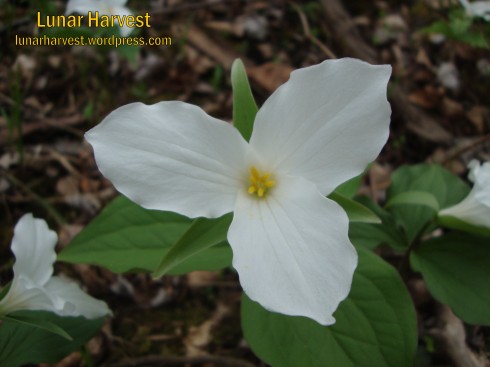

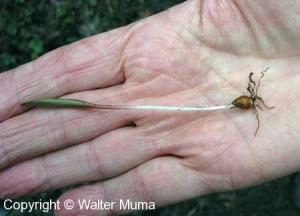


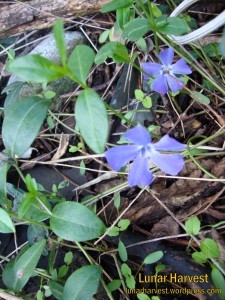


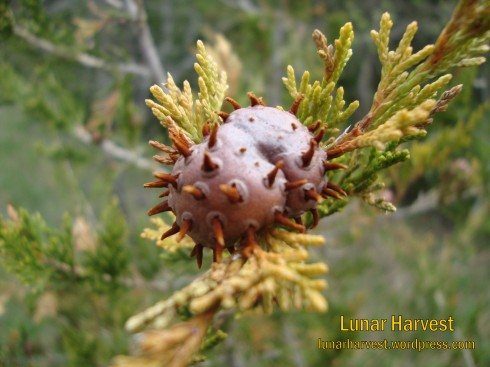


































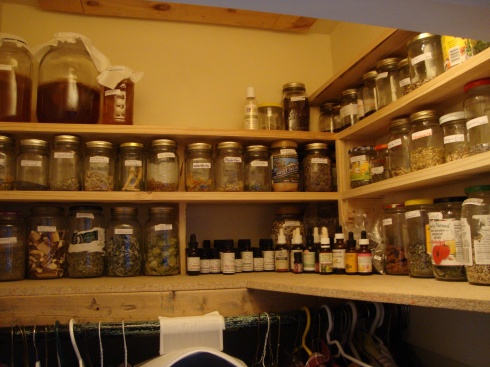



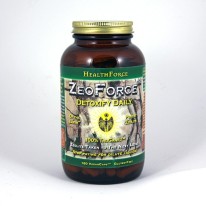



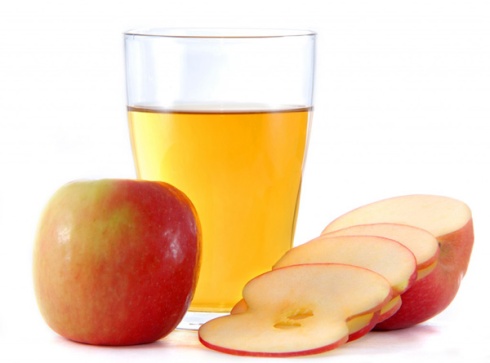


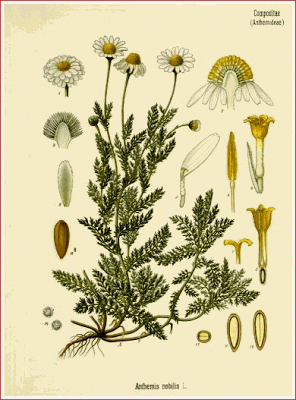









 We Are Wildness
We Are Wildness Wild Body Wellness
Wild Body Wellness Young and Raw
Young and Raw Raw In Canada
Raw In Canada The Cottage Gardener; Seedy Stories Blog
The Cottage Gardener; Seedy Stories Blog Beer For Breakfast
Beer For Breakfast